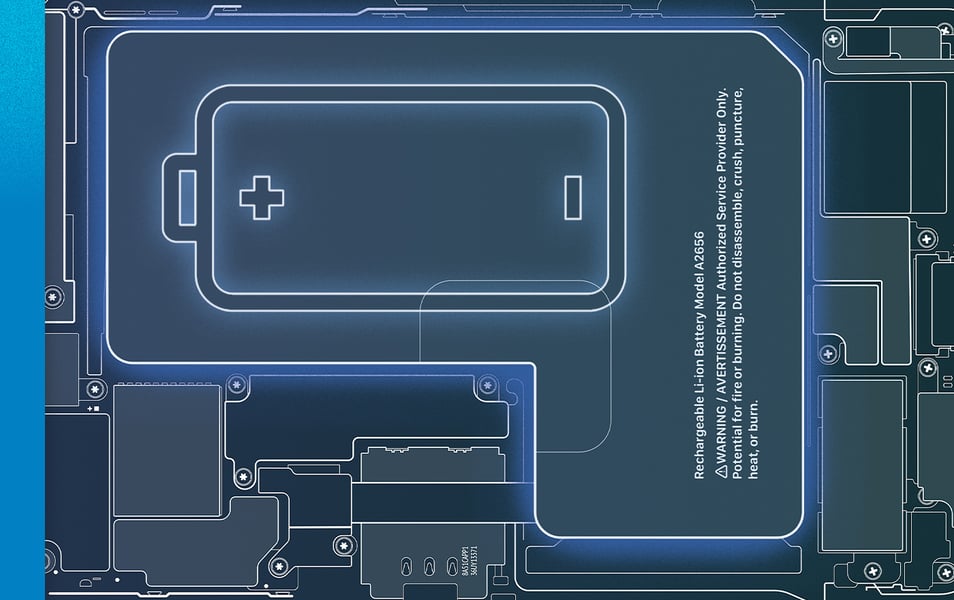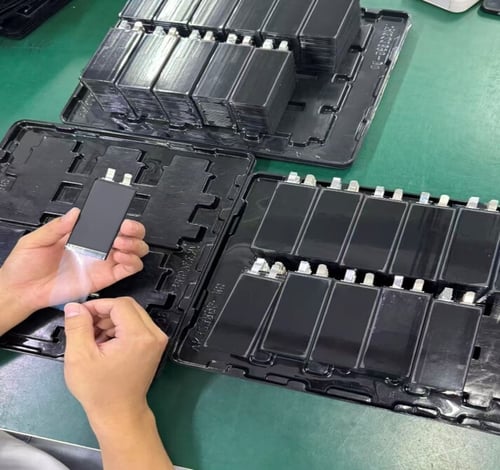Factors that determine the battery quality.

It is important to understand that used devices have several underlying factors that determine there quality level. One of the most important factors involved, is the battery statistics. Batteries tend to go bad over time based on both charge cycles and cell age, regardless of usage. Do you want to find out more about this matter? Read along.
Factor 1: Cell age
First of all, the current Lithium-Ion technology (Li-ion batteries) that is regularly used in smartphones takes about 24 months to be considered “expired” due to internal chemistry breakdown. Even basic
testing to extract the statistics, does not give you a trustworthy idea of the battery health. Because it takes lengthy testing of the battery with multiple cycles to get reliable data of the battery health. In
general, we can say that a battery that has been used for 12 months, is halfway through its life-cycle. Please note, that this article was written with a broad spectrum of experience that fits most Lithium Ion batteries currently used in smartphones introduced through 2020.
The entire ageing process of batteries is still a frequent debated subject, since it is still not fully understood. Now, we are catching up on the science. Unfortunately, we still do not have a complete answer. However, without a complete answer, we can see a few reasons why this might be occurring:
1. The first theory is that dendrites can form along the anode of the battery cell. When the an ode has imperfections, dendrites have a nucleation site to form. Once formed, dendrites will only increase and can grow to puncture the batteries layers. Therefore, the battery performance drops.
2. The second theory is that a highly resistant cover layer forms on the anode during storage. This causes a malfunction of the battery cell, causing the lithium to drain from the cell. This cover layer normally disappears during use but constantly grows in the battery if it is not charged.
3. The latest and most likely theory is that Li-ion batteries lose even more voltage than normal because they are stored at incorrect temperatures or voltages. If the total voltage of the battery has fallen below a certain level, it is possible to breathe new life into the battery, but it still loses capacity.
Factor 2: Cycle counts

The second factor to pay attention to, is cycle counts. As batteries age, the cell itself will start to transform in portions to a rock type content, see the figure above. In the simplest of terms, this prevents the cell from holding the same energy as it once did. Even people with no knowledge of the technology, can recognize this symptom. If you have ever had a battery die at 40%, basically the battery was unable to hold voltage and died prematurely.
You can compare the original 0-100% measurement based on cell age with the cycle counts. The outcome: about 730 complete cycles after 2 years of daily charging. Please note, this can vary depending on the brand and batteries internal chemistry, and has been known to vary between 5-800 cycles. Combine both factors, it would mean that a battery will go from 100% to 0% in 24 months and 730 cycles.
Factor 3: Battery health
The final factor would be current battery health. This is based on the math between both the design capacity and the actual capacity of the cell. For iPhones, this is easy to determine because they use a measurement that is constantly doing learning cycles. Therefore, iPhones create averages that turn out to be this “battery health”. So to Illustrate this, if the batteries original capacity was 1000mah and the actual capacity was 765mah. Just plug that into an easy equation where D is design capacity and A is actual capacity.
Formula:
A / (D / 100) where 100 is the total percentage out of 100 of battery capacity.
Plug in our numbers: 765 / ( 1000 / 100 )
Order of Operations: 765 / 10
Final percentage based on reported numbers: 76.5% Therefore, we can see that we are at about 77%, if we do the same rounding as the device does. So with all this info, we can look at the examples below and determine which ones are good. While there are more ways to continue to evaluate this information instinctively, we should be able to determine overall health with these three factors.
Battery statistics examples
M = Months C = Cycles BH = Battery Health
Let’s say, all batteries are 3000mah and 80%BH is the replacement time. 80% of 3000mah is 2400mah.
1. 8M & 120C & 97%BH = Good Battery
We can see here that we have a low cell age and low cycles. Also, the battery health matches those numbers. I would call this a good battery in a used phone.
2. 28M & 50C & 100%BH = Bad battery
Right off the bat, we hope you can see something here is fishy! How can we have 100% battery health with a 28 month cell age and 50 cycles. Easy, the battery was not used long enough to drop its first percentage point. It was sold and put into storage. This means that if the phone is used now, the battery will start to perform those averages. It may start to show degraded health very prematurely once the averages reflect into BH.
3. 16M & 1000C & 70% BH = Bad battery
This reflects classic battery degradation and shows through all factors a bad battery as battery statistics intended and showed. With 16 months the battery is nearing its expiry date, with 1000 cycles it is clearly a heavily used battery as well during those 16 months. Lastly the battery health has depleted a lot too. All in all a generally bad battery that would need replacing.
So, now we hope you can see the relationship of battery statistics and used devices. Not all used devices have the same quality battery. Therefore we cherry pick our used devices not only based on cosmetics, like all other sellers. We evaluate every unit for proper battery statistics to make sure you are buying the quality you know 2Service stands for. Battery health alone does not tell you enough to make sure of this.
This article is previously published in our inspirational magazine.
Related articles
-
 Parts Technical info
Parts Technical infoNew: Original pulled iPhone 16 front cameras – directly calibratable without an additional flex
Discover the new iPhone 16 front cameras that are pre-tested for calibration, making repairs faster and simpler for technicians.
Read more -
 Parts Technical info
Parts Technical infoHow to recognize an original JK OLED display? – 6 key checkpoints
Learn to identify authentic JK displays with six key tips and ensure you're always using genuine products from Mobileparts.shop, Europe's official JK distributor.
Read more -
 Parts Technical info
Parts Technical infoInside the battery: How Mobileparts.shop ensures top-quality compatible batteries for iPhone
Mobileparts.shop ensures top-quality iPhone and iPad batteries through a meticulous production and multi-step testing process, focusing on safety, performance, and longevity, ultimately providing...
Read more
